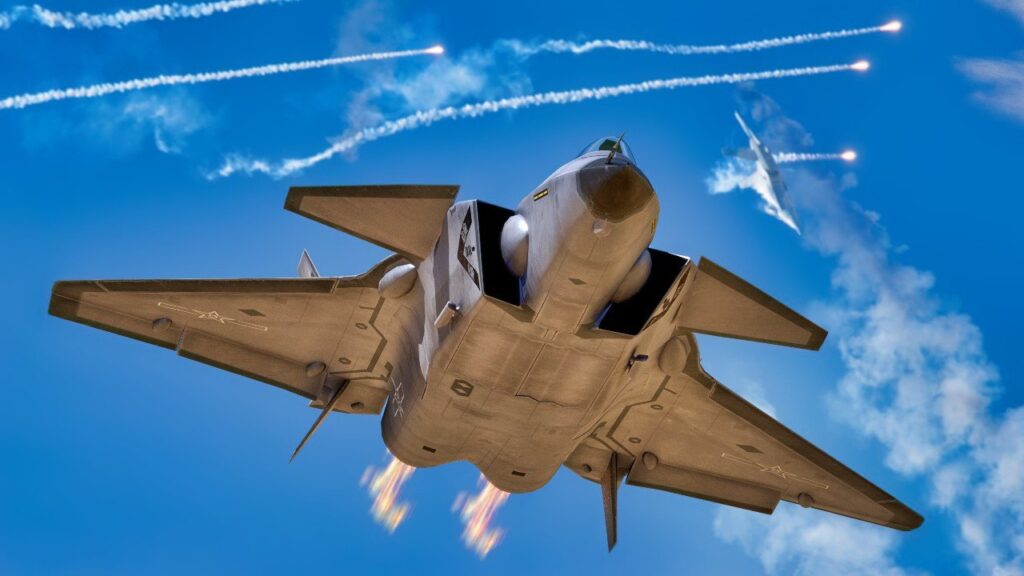Summary and key points: China’s first fifth-generation stealth fighter, the Chengdu J-20 Mighty Dragon, has raised suspicions that it borrows from American technology.
– After its debut in 2011, questions emerged that the J-20’s rapid development may have been driven by espionage and technology theft.
– China may have benefited from technology from the downed F-117 Nighthawk and intelligence from McDonnell Douglas’ Shanghai assembly plant. According to former Deputy Under Secretary of Defense Policy James Anderson, such espionage led to significant advances in the J-20, saving China time and resources.
Chengdu J-20: China’s stealth fighter and the espionage debate
The Chengdu J-20 Mighty Dragon was China’s first fifth-generation stealth fighter. As such, the J-20 garnered a certain amount of respect from Western nations, who recognized that their enemies had taken a step toward weakening their hallowed military superiority. But the J-20, despite its possible incorporation of American technology, is not on par with American fifth-generation fighters such as the F-22 or F-35.
Is the J-20 domestically produced?
In 2011, shortly after the J-20’s debut, the Center for Strategic and International Studies (CSIS) posed the question on everyone’s mind: Does China’s new stealth fighter, the J-20, feature American technology?
“This is not the first time that China has made more rapid progress in developing advanced weapons,” CSIS writes. “While it took the United States and the Soviet Union decades to reduce the noise of their nuclear submarines, China achieved a similar feat in roughly half the time.” But China has shown little talent in developing similarly advanced technologies, raising suspicions. “It is natural to suspect that China could have obtained necessary submarine technology through espionage or other illicit means that is not shared by either the United States or Russia.”
Similar questions are now being asked about the speed and manner in which China was able to develop the J-20.
China, as any rational actor would, is actively trying to steal U.S. military technology. With regard to stealth technology, China may have acquired pieces of an F-117 Nighthawk shot down in Serbia in 1999. China denies acquiring the F-117, but this denial is likely a fabrication. China was assisting Serbia at the time, and it would not have been unusual for Serbia to show its “gratitude” in the form of a stealth technology exchange with the United States.
China also closely watched the American company McDonnell Douglas when it operated an assembly plant in Shanghai in the 1990s. By observing American manufacturing methods, China learned skills and techniques that fueled the growth of its own aerospace manufacturing industry.
None of China’s technology collection activities are unusual, nor is its recent surge in cyberespionage. But according to former Deputy Secretary of Defense James Anderson, the J-20 directly benefits from stealing American technology: “We know this because of espionage. The J-20 is more advanced than we would have thought possible without espionage, and that’s the whole point. China has benefited greatly from stealing for many years. They’ve used it to their advantage to create advanced fifth-generation fighter jets.”
Anderson said the methods China has used to obtain U.S. military secrets range from “low-tech” methods such as human espionage, honey traps and bribery to high-tech methods such as cyber hacking.
“It saves China time and money,” Anderson said. “In effect, they’re stealing some of our secrets, and we’re subsidizing some of their research and development budget.”
About the author: Defense expert Harrison Cass
Harrison Kass is a defense and national security writer who has authored over 1,000 articles on issues relating to international affairs. An attorney, pilot, guitarist, and minor professional hockey player, Harrison enlisted in the United States Air Force as a pilot trainee but was discharged for health reasons. Harrison earned his bachelor’s degree from Lake Forest College, his Juris Doctor from the University of Oregon, and his master’s degree from New York University. Harrison listens to Dokken.
All images are Creative Commons.
From the safe
Russia panics: Why the US Navy is “decommissioning” Iowa-class battleships
Battleship vs. Battlecruiser: Iowa vs. Russian Kirov (Who Will Win?)

